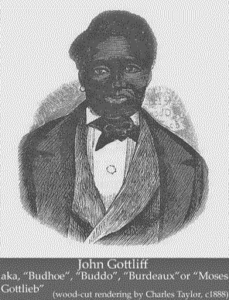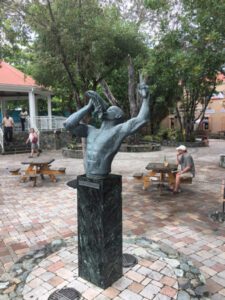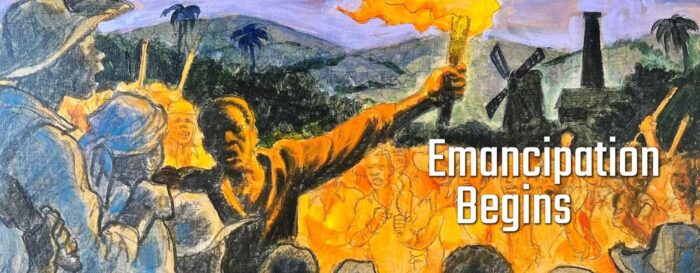July 3rd for most of the country is a day of preparation and travel for the Fourth of July. However, in the U.S. Virgin Islands the celebrations begin early. Emancipation Day is a very important part of our culture worth understanding.
We’ve already kicked off “Freedom Week” and this July 3rd, we’re celebrating the 175th Anniversary of when the enslaved people of the territory gained their emancipation after 177 years of Danish rule.
Following weeks of planning, it was the evening July 2, 1848 that the slave revolt on St. Croix’s west end began, marked by bells ringing and the blowing of conch shells. Then, by the morning of July 3rd there were thousands of people in the streets marching toward Frederiksted with machetes and cane bills.
There were many important people that were involved in the emancipation, but maybe none as important as John Gottlieb (AKA General Buddhoe), who was a voice and leader during the rebellion against the Danish.

The name Buddhoe means “leader” which is exactly what he was. He was only 28 at the time and was able to plan, organize and lead the rebellions against the Danish which led to the eventual freedom of slaves.
On July 3rd at 4pm, Governor von Scholten descended from his carriage in Frederiksted and said, “You are free now, you are hereby emancipated.”
In the following days after the emancipation Buddhoe traveled the countryside urging people not to loot and destroy the property of slave owners, rather that they need to put down their weapons and band together to do what is best for the island.
Because of his efforts, the damage was relatively small, with only three buildings in all being destroyed. On September 22, 1848, King Frederik VII issued a Royal Letter, in which the Emancipation Proclamation of July 3 was officially recognized.
Although 1848 is important, a great first step, and should be celebrated, it should be noted that freedom was still not immediately recognized.
Buddhoe who played a critical role in creating peace following emancipation was arrested, imprisoned, and later deported to Trinidad.
Many former slaves were forced back to the same plantations as contract workers in a system of forced peonage that was strictly enforced by government laws. It wasn’t until 1878 that the contract system was ended.
Today, those familiar with St. John will recognize the iconic statue in the Franklin Powell Park in downtown Cruz Bay. This statue is a way to recognize the spirit of freedom for Virgin Islanders.

If you’re interested in learning more about the full history of Emancipation Day, you can visit vi175.com.
If you’re interested in participating in any Freedom Week events, you can see the schedule at vi175.com/usvi-freedom-week.
Sources:
John Gottliff: The Man Behind Buddoe | St. John Historical Society (stjohnhistoricalsociety.org)
Home – USVI 175th Emancipation



We were there in 1998 for our first trip to STJ, camping at Maho with our kids, 10 and 13! It was the 150th anniversary of Emancipation and the Carnival was so awesome. We’ll never forget it. Been back many times since then!
Thank you for sharing… We cannot afford to forget this important history…